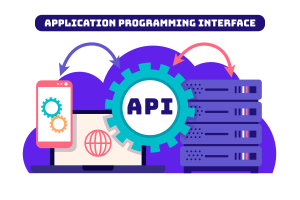29.06.2022
WordPress Development
API-First Approach to WordPress Development
READING TIME: MIN
Table of Content
APIs are the new craze in the web development world and deservingly so. The technology is steadily redefining the way in which both developers and large-scale enterprise organisations are approaching web and app development. As a result, many businesses are shifting their focus to an API-first architecture.
Now, our WordPress agency for enterprise believes that the code-first approach is still going strong, but the digital landscape is becoming more and more dynamic with each passing day, thus necessitating the shift toward greater innovations.
Monolithic systems that are mostly based on a single language or framework are not as effective anymore. This is due to the growing utilisation of varied sets of languages, protocols, communication methods, and API integrations that now play a bigger part in the development of highly dynamic websites and applications.
The API-first approach is perfect for anyone who wants to take advantage of the latest software trends like microservices, serverless deployment and edge computing. Our enterprise WordPress agency recommends this approach to businesses that prioritise high levels of autonomy since API-first favours more dynamic design and development paradigms.
With that being said, in this article, we’ll explore the fundamental concepts that drive API-first development as well as the benefits and challenges of this strategy. Let’s go and see what the API-first approach is all about, shall we?
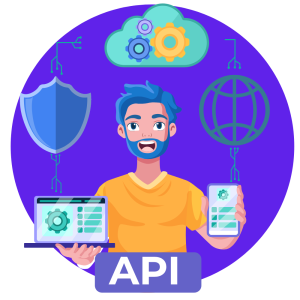
What Is an Application Programming Interface (API)?
Before we dive deep into the subject of the API-first approach, let’s recall what API actually means. Our WordPress agency for enterprise reminds you that an API, or Application Programming Interface, is a set of functions that enables an application to interface with other programmes, operating systems, microservices, or data.
APIs basically serve as bridges that allow different applications to interact with one another. For instance, if you’re running an eCommerce website, you’ll probably want your customers’ data to sync seamlessly with your separate CRM solution. APIs make that possible (and you can leverage their power with WordPress via the REST API functionality of the platform).
In a nutshell, APIs remove vendor lock-in by allowing different software products to automatically “talk to” each other on your behalf. APIs are absolutely essential for the creation of a robust online commerce strategy. Our enterprise WordPress agency wants you to remember that APIs enhance your potential to integrate with new markets and business solutions in the future.
The best thing about APIs is that they make room for innovation, which is something that any reputable company strives for nowadays. If you want to achieve long-term success with your business endeavours, the API functionality that is supported by WordPress is the way to go.
Here’s a quick summary of the biggest benefits you can experience thanks to APIs:
- APIs allow your business to explore new channels of revenue.
- APIs allow your business to connect to tools that improve operational efficiency.
- APIs allow your business to streamline its interactions with partners.
*While we’re on the topic of applications… Are you interested in developing custom web applications? Read our article on how to use WordPress as an application framework to learn everything about the API functionality of the platform and what you can achieve with it!
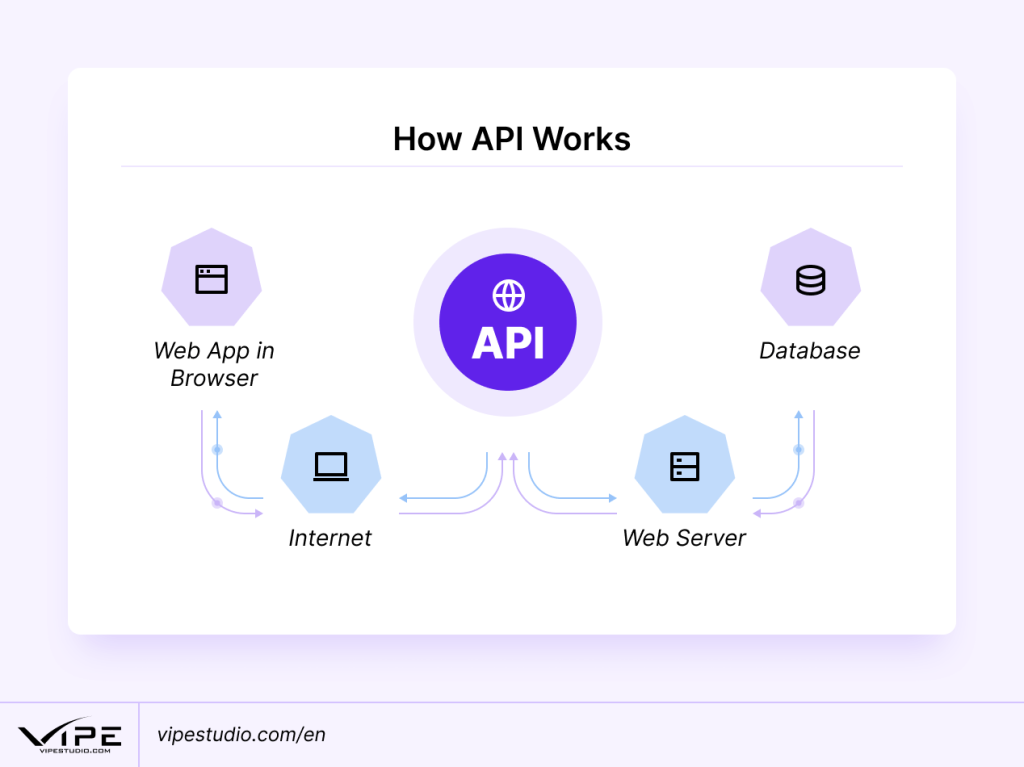
The API-First Approach Explained
Now it’s time to explore the main subject of this article, namely the API-first approach to web development. Our WordPress agency for enterprise can give you the following definition of API-first:
An API-first approach to web development and web design is one that focuses on the API. When done properly, API-first must ensure that every operation can be performed using the scripting language. Additionally, every piece of functionality should be accessible to other systems.
To clarify this concept even further, we can say that an API-first approach to software development means treating APIs as reusable and widely obtainable resources that client apps may leverage. For instance, instead of constructing a website and then integrating an API afterwards, API-first implies designing websites around an API from the ground up.
If you choose an API-first approach, our enterprise WordPress agency recommends you start viewing APIs as key business assets that can be super useful to your company.
To ensure consistency, reusability, and broad interoperability, you should construct each of your APIs around a contract which specifies how your API will function (the documentation can include endpoint URLs, actions of each endpoint, arguments, examples of responses, etc.).
Those contracts are useful for the outline of the design of your API, and they help you obtain input from stakeholders. But most importantly, these API contracts take centre stage before the development of any code has begun.
So, what happens after that contact has been created and approved by everyone involved in the project? Well, our WordPress agency for enterprise can tell you that in the next phase, developers begin to sketch out the automated process and review the cycles that will be required.
Only when everyone is happy with the structure and design of the APIs and their intended lifecycle, developers may begin writing the blocks of code. This is why it’s crucial to create well-defined API contracts. A comprehensive contract will ensure that the coding procedures are well-defined and the standards for performance, error rates and availability are established prior to the actual development.
With the API-first approach, both detailed documentation and effective communications are top considerations. Our enterprise WordPress agency suggests you include (or require) the following in your documentation:
- Requirement checklists.
- Screenshots.
- Links to related system designs.
*WordPress is an excellent platform for the API-first approach since it supports REST API functionality. Learn what makes REST API the greatest superpower of WordPress!
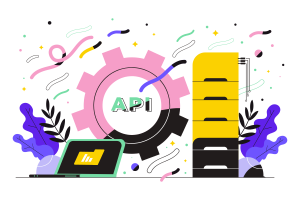
Benefits of the API-First Approach
When you decide to adopt an API-first approach, you can experience various advantages. APIs, by themselves, have already proven to be a highly beneficial solution for web development, and with the API-first approach, those benefits are further reinforced.
Our WordPress agency for enterprise can tell you that numerous expert reports like the “Postman’s State of the API Report” and “Google Cloud’s Digital Transformation Report” have stated that the majority of big organisations are already embracing API-first tactics. This results in a slew of advantages such as:
- Faster creation of APIs.
- Quicker launch.
- Fewer failures (and faster recovery when failures occur).
- Faster innovation.
- Higher value from business collaborations.
In the next few points, we’ll explore some of the biggest advantages of the API-first approach in greater detail:
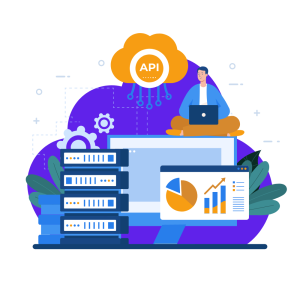
1. Enhanced Development Experience
APIs, in general, speed up the development process by making data and functionality more easily accessible. The API-first approach treats APIs as building elements. Our enterprise WordPress agency is a big proponent of this approach as with it, customers may pick and choose the components they require. This, of course, saves time and ensures that no unnecessary functionality is being developed.
You should know that the entire development process depends on consistency. When data is delivered in similar forms, via common protocols and procedures, developers face fewer issues.
The API-first approach achieves consistency by recognising that APIs are part of a larger platform that requires interoperability. Furthermore, API development teams use assets such as style guidelines to create APIs that work together, which helps them to establish uniformity.
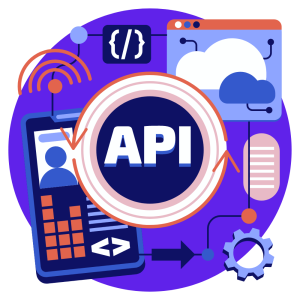
2. Flexibility
Like our WordPress agency for enterprise already said, each API is treated as its own product under the API-first approach. This decoupling allows APIs to be designed, built, deployed and maintained in a variety of ways. So organisations and development teams have the flexibility and freedom to choose the technology stack for their APIs. This means that as long as you want to, you can use different tech stacks across APIs.
API-first eliminates any dependency thanks to its decoupled nature. With this approach, APIs can grow, adapt, and be modified without the complexity that comes with bigger, monolithic systems. The same thing goes for the infrastructure necessary to host the APIs since each API can select its own infrastructure tailored to its individual requirements.
Our enterprise WordPress agency recommends API-first to anyone interested in modern deployment methods. For instance, API-first fits well with approaches like containerization, in which individual services are configured and scaled on demand.
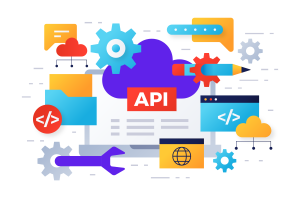
3. Interoperability
Standardisation is one of the key aspects of an API-first approach. We remind you that standards aid in the promotion of system compatibility, interoperability, and general utility.
When API providers adhere to common standards, such as the OpenAPI Specification (OAS), customers get access to an ecosystem of third-party tools and systems that are likewise compliant with those standards.
Our WordPress agency for enterprise needs you to remember that standardisation is equally beneficial for providers and customers alike. An API provider, for example, can leverage their OAS document to automate the documentation generation process. API consumers, on the other hand, can benefit from employing an OAS document to automate the generation of API client SDKs.
OAS documents, when utilised correctly, provide a unified vision for both consumers and providers. These types of documents (also known as contracts) encourage collaboration by functioning as a binding agreement between parties.
Additionally, our enterprise WordPress agency can tell you that OAS documents help API providers to uncover mistakes early in the API development lifecycle. This, in turn, ensures that end-users won’t be affected by unpleasant errors. In a nutshell, when utilised as a part of an automated testing process, OAS documents guarantee that API providers are fulfilling their half of the contract.
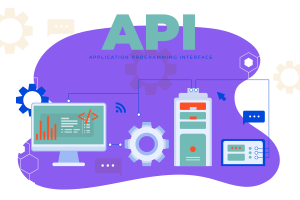
4. Opportunity and Innovation
APIs are quite a good helper, when it comes to creating new business models and income streams. An API-first approach can significantly boost the odds of success of any online business since APIs are generally well-documented, consistent, accessible, and reusable.
Our WordPress agency for enterprise reminds you that the API-first strategy may accommodate a wide range of customer use cases. This is possible due to the fact that with this tactic, each API is treated as its own product, meaning no time and resources are being spared for its creation.
This approach expands cooperation options across internal business divisions as well as external customers such as clients, partners, and other third parties. What’s more, API-first can be great for organisations that wish to implement an omnichannel strategy.
APIs’ headless nature makes them ideal for this, since the many systems and apps that make up an omnichannel strategy may utilise them to access the data they need in the manner they choose. Our enterprise WordPress agency advises you to think of APIs as a modular basis on which omnichannel solutions may be developed (with an API-first approach).
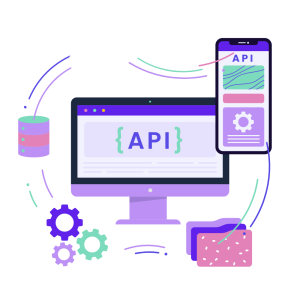
5. Microservices
The web development world is seeing a massive push toward reusability. Large-scale enterprise companies are shifting away from all-in-one platforms and are beginning to prioritise reusable components.
For instance, reusable components are much better for eCommerce platforms than confining all-in-one solutions. Nowadays, online retailers can benefit from the finest reusable components (such as inventory management, checkout, payment gateway, order fulfilment, etc.) and merge them together to create business solutions exactly fitted to their needs.
*Find out more about the applications of REST API in WooCommerce to take your eCommerce business to the next level!
Our WordPress agency for enterprise reminds you that you can’t have microservices without APIs since the reusable components need a way to interact with one another. An API-first approach allows other developers to quickly connect your APIs to theirs using microservice architecture and apps.
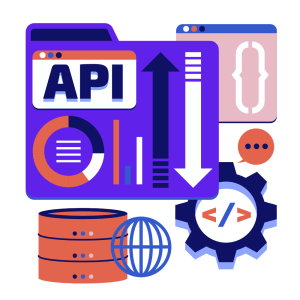
Challenges of the API-First Approach
While the API-first approach has some undeniable benefits, adopting it comes with its own set of unique challenges. Let’s look at some of them in the next few points so that you’ll know what to expect.
1. Change in Mindset
Our enterprise WordPress agency warns you that embracing an API-first approach can be quite tough for businesses that lack executive-level support. API-first necessitates a shift in thinking, in which APIs are treated as standalone products. If you fail to grasp the concept of API-first, you’ll be left with APIs that have limited reach and don’t perform at their full potential.
This is why executive-level support is crucial. Your organisation will need assistance with any essential changes in procedure, staffing, or culture. And those changes will inevitably come when you adopt a brand-new approach to API development.
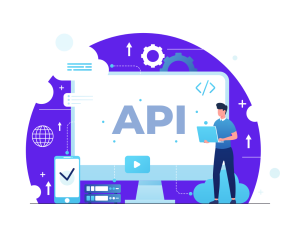
2. Diverse Technology
Because APIs are seen as separate products under the API-first approach, each API has complete control over its technological stack. Our WordPress agency for enterprise doesn’t view this as a bad thing, but it can definitely be a challenge for some organisations.
Adopting the correct technology to tackle an issue may be advantageous in a variety of ways. However, it can also result in technical divergence across APIs. This means that the developers who construct and manage such APIs will need a larger skill set to operate and manage this assorted environment.
Organisations need to be careful with their staffing because it can have an impact on the workforce’s flexibility and cost. And if a company outsources the development of their web project to an external agency, thorough research must be done to ensure the developers have the needed expertise to adhere to the best practices associated with API-first.
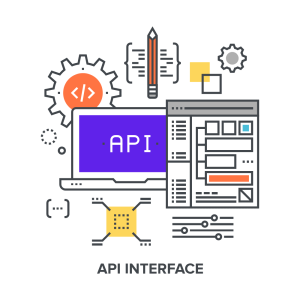
3. Security
Our enterprise WordPress agency is aware that many organisations like to implement the air gap security measure to ensure that their critical systems are not reachable over a network. Unfortunately, the air gap technique is not applicable in the API-first approach. Why? Because, by default, APIs are useless without users.
APIs are designed to make integration easier thus they must be available through the Internet. But as with anything that can be accessed over a network, APIs too can become vulnerable to attacks. Furthermore, the attack surface rises as the number of APIs grows.
Of course, there are several methods that can lessen the risk of an attack, but businesses must be aware of the possible threats and take necessary action against them. Our WordPress agency for enterprise warns you that the technology diversity that is common to APIs can worsen security problems.
It is only natural that the increase in the number of technologies makes the work of safeguarding the system more difficult. However, as long as your API development is entrusted to experienced developers, vulnerabilities should be kept at a minimum.
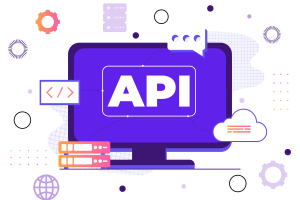
4. Governance
When it comes to the API-first approach, governance is absolutely critical. Remember that we’re dealing with technological diversity and security, so we need supervision and guidance in order to overcome any difficulties that may arise.
Like our enterprise WordPress agency already mentioned, standardisation is super important for platforms built with the API-first approach. Remember that the entire API-first paradigm can be jeopardised without sufficient oversight.
When one system consumes the output of another, consumers must know that they can rely on their providers. Otherwise, consumer-provider linkages would be weak and vulnerable to failure when change eventually happens.
All of this necessitates the use of a solid release process and versioning methodology, as well as well-defined principles on backwards compatibility.
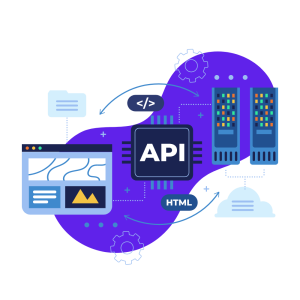
API-First and the MACH Alliance Principles
The API-first approach and APIs, in general, are part of a broader technological ecosystem. That’s why, API-first is frequently used in conjunction with two additional concepts: JAMstack architecture and the MACH Alliance principles.
Our WordPress agency for enterprise reminds you that JAMstack is a term that refers to a modern web development architecture based on JavaScript, APIs, and Markup (JAM). You should think of JAMstack as a unique way of building apps and websites.
The JAMstack architecture aims to make the web more responsive, safe, and scalable by utilising the core principles of pre-rendering and decoupling. This concept has actually inspired the MACH Alliance principles, where the API-first approach fits pretty neatly.
Are you wondering what the MACH Alliance is? Don’t worry, our enterprise WordPress agency can explain!
So the MACH Alliance is a not-for-profit industry body that was established to assist enterprise organisations in navigating the complicated modern technological landscape. Its goal is to guide and demonstrate the business benefits of open tech ecosystems that are Microservices based, API-first, Cloud-native SaaS and Headless (hence the acronym MACH).
Here are the four principles that large-scale enterprise organisations should follow, according to the MACH Alliance:
- Microservices: An architectural and organisational approach to software development in which software is made up of small, self-contained services that communicate via well-defined APIs.
- API-first: A product-centric approach to developing APIs.
- Cloud-native: Using composable architecture to build Software-as-a-Service (SaaS) that is developed, designed, and distributed as cloud-native applications (aka cloud-native SaaS).
- Headless: Decoupled architecture that separates the front and back ends of a website or application (think headless WordPress development).
Our WordPress agency for enterprise believes that the MACH Alliance principles are yet another proof that APIs are the future of enterprise technology. And the best part is that WordPress is one of the most robust platforms that can be used if you want to utilise an API-first approach and a headless architecture for your dynamic website or app.
*Did someone say headless? Learn why headless WordPress is the future of enterprise and what are the major benefits of a headless architecture!
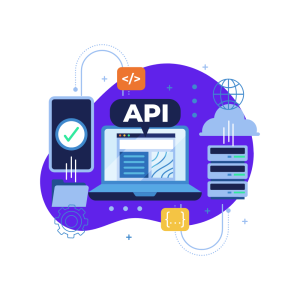
Useful Tools for API-First Development
We already discussed the importance of API contracts, but there is one more thing that is crucial for successfully implementing the API-first approach. We’re talking about API style guides.
Our enterprise WordPress agency advises you to pay special attention to API style guides as they can assist you with the following:
- Structure important facets of error handling.
- Regulate code formats.
- Control versioning strategies.
- + Oversee other standard maintenance processes.
To help with the aforementioned points, many API management providers offer tools that were specifically designed to streamline the processes associated with an API-first approach. Here are some tools you can check out:
- SwaggerHub: This is an API development and documentation management platform that can make it easier for developers to distribute the necessary style guides and documentation throughout an organisation. The tool can be used as an excellent single source of truth for testing and deployment standards.
- FastAPI: Our WordPress agency for enterprise likes this open-source web framework because it’s perfect for developers who work with Node.js and Go. FastAPI is mostly based on Python, and it features the asyncio library, which has a wide range of high- and low-level APIs for supporting concurrent application procedures.
- API Manager: A tool for modelling and documenting API-first design requirements, Mulesoft’s API Manager provides substantial assistance for those working with OAS or RAML. API Manager facilitates the creation of documentation, mock APIs, and service integration activities.
- Postman: With a heavy emphasis on documentation, monitoring, automated testing, and the creation of mock APIs, Postman is a platform for API builds and deployments. Our enterprise WordPress agency recommends this tool to developers who want to quickly add API test suites that detect problems with integration, performance, and contract compliance. A built-in editor in Postman enables teams to integrate their own specifications into an existing project and assists developers in defining APIs using industry-standard specifications like Open API, RAML, and GraphQL.
- ReadyAPI: A variety of practical API-first design tools are available on Smartbear’s ReadyAPI platform, many of which are focused on building CI/CD integrations with JIRA, Git, Slack, and Jenkins. ReadyAPI offers useful companion tools that provide further testing and simulation capabilities for both RESTful and SOAP-based APIs. Our WordPress agency for enterprise thinks this is a good option for enterprises with stringent security and performance needs.
API-First Alternatives
There are many different approaches that can be implemented in the process of web development. The API-first approach is one such method, with code-first being on the other end of the spectrum. There is also the API design-first approach that falls somewhere in the middle.
With that being said, let’s look at the two main alternatives to the API-first approach so that you can make the right decision for your business:
Code-First
APIs are seen as tactical implementations in the code-first methodology (sometimes referred to as integration-first). Our enterprise WordPress agency can tell you that with this approach, APIs are designed with a specific use in mind, such as integrating two systems as part of a bigger project or acting as endpoints for a user interface.
Instead of thinking about how the API may be used more broadly, emphasis is placed on ensuring it is appropriate for the implementation in question. Finding and investigating new possibilities is regarded as being outside the realm of code-first APIs. Once created, code-first APIs normally don’t change unless the systems they connect demand it. This means that the value of the APIs is constrained.
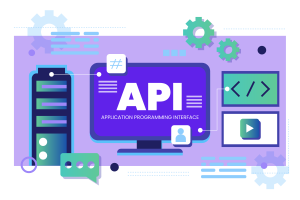
API Design-First
The principles of API design-first may be viewed as a subset of API-first. This is a design-led methodology that can be advantageous to both the supplier and the customer. Our WordPress agency for enterprise recommends this approach to organisations that want more consistent APIs that can serve more use cases and that can be easily customised and scaled in the future. The distinction between this approach and API-first is how much strategic thought is involved.
API design-first has the primary purpose of designing APIs correctly, rather than generating APIs to establish an API platform ecosystem. So, there are additional levels of API governance and portfolio management, which results in a more coherent and functional API platform.
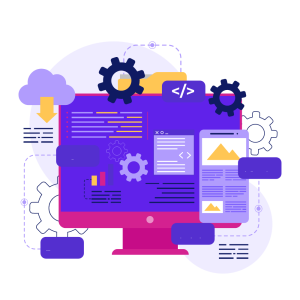
Is the API-First Approach a Viable Option for WordPress Website Development?
And so, an API-first approach to WordPress website development is an obvious choice for organisations that wish to make APIs a key component of their entire strategy. Our enterprise WordPress agency recommends this approach to large-scale companies that want their APIs to serve as building blocks that can be scaled to meet customer demands as well as the internal business objectives.
The API-first approach comes with a plethora of benefits among which are improved developer experience, technical flexibility, system interoperability, and innovation. Of course, this approach isn’t a one-size-fits-all kind of solution. Organisations who want to use APIs in a tactical sense don’t need to consider the more complex API-first approach.
However, those that currently approach APIs from a design-led perspective can easily make the switch to API-first. If there’s one thing that our WordPress agency for enterprise wants you to remember about the API-first approach, it is this:
By using API-first, a company can produce apps that not only work across all channels but can also expand when additional channels are introduced. All of this without having to develop fresh solutions for each new channel. By offering more flexibility, scalability, and control, API-first systems provide enterprises with a competitive edge that makes them stand out from the crowd.
More on The Topic
- Ecommerce Plugins Eating Time and Sanity
- Content Migration as a WordPress Bottleneck
- Headless WordPress and Headless Communication
- Staging Sites That Reveal Organizational Blind Spots
- WordPress Performance Debt Nobody Talks About
Tags: apiAPI design-firstAPI-firstREST APIRESTful APIWordPress REST API
The content of this website is copyrighted and protected by Creative Commons 4.0.



